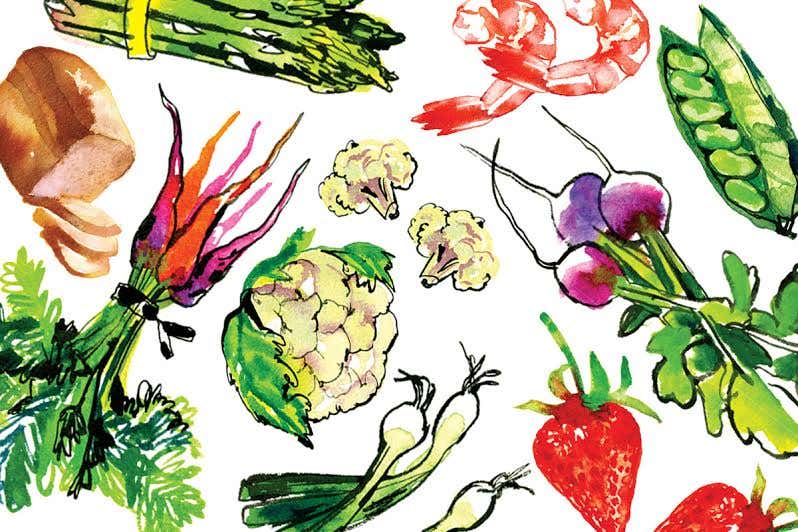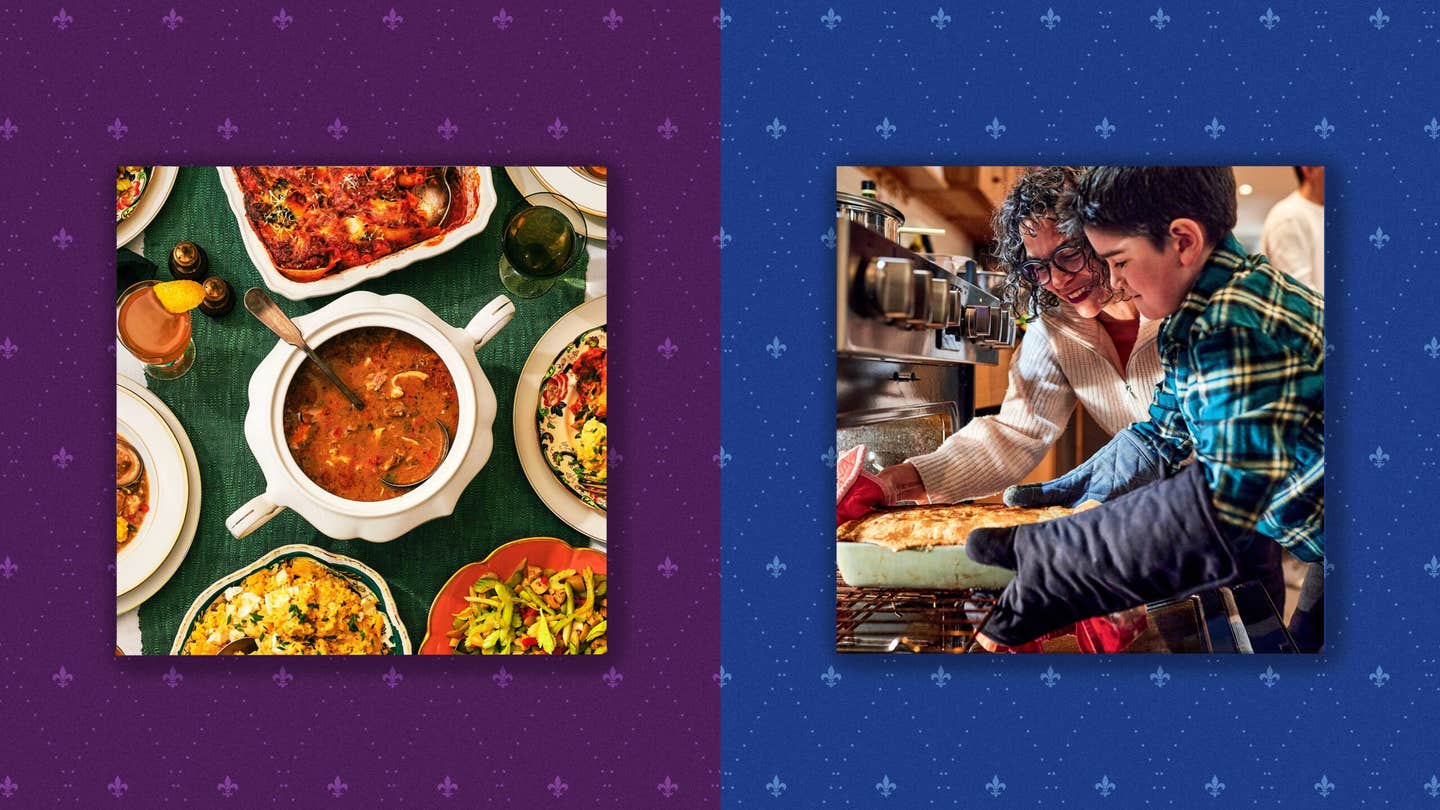
Rhubarb, Rhubarb
One Colorado town is passionate about this sour-sweet plant, and we like it pretty well ourselves.
Silverton's growing season is dismally short. At most, this tiny town in the Colorado Rockies gets a month's worth of frost-free days each year—and exactly when those days will fall, you can only guess. "The weather here is hard to gauge," says local retired businessman Gene Halaburt. "One year it snowed on the Fourth of July."
Silverton, which is about 400 driving miles southwest of Denver, is no ordinary town, admits Linda Bernard, the town's mayor. Bernard draws a salary of $110 a month, and claims to be the only officeholder in the world whose campaign slogan was "No Paved Streets".
If Silverton is not exactly up to 20th-century speed, the people here like it that way. During the silver boom at the end of the last century, the town boasted 37 saloons, three theaters, two newspapers, and more brothels than you could count. According to local lore, the song "There'll be a Hot Time in the Old Town Tonite" was written in Silverton, back in the 1880s. The tune certainly wouldn't apply today to this sleepy backwater of pretty Victorian houses that line streets wide enough to have been designed by Baron Haussmann. The miners are gone now, replaced by tourists. Every morning, several hundred of them arrive by train from Durango—a 45-mile, three-and-a-half-hour ride that takes them through the staggeringly beautiful San Juan Mountains. By four in the afternoon, most of the day-trippers are back aboard the narrow-gauge steam train for the return journey.
Between the weather and the altitude (9,300 feet above sea level), not much flourishes in Silverton. But there are exceptions: Dandelions love it here; horseradish prospers; and rhubarb runs riot. And Silverton is passionate about its rhubarb—so much so that one resident recently felt compelled to draw up an inventory of every plant in the area. By her estimate, there turns out to be close to 400, which works out to almost one for every man, woman, and child in town.
The stalks of the rhubarb plant (Rheum rhabarbarum), a hardy perennial, look a bit like oversize, red celery, but rhubarb is actually a member of the buckwheat family, and a close relative of dock and sorrel. Though usually eaten as a fruit, it is technically a vegetable. Native to northern Asia, rhubarb was named for the barbarians who first introduced it to western Europe—and perhaps for the Volga River, whose ancient name was the Rha, and whence the barbarian Tatars (who may have brought it westward) came.
Known to the world for more than 4,000 years (it is mentioned in a Chinese herbal that dates back to 2700 b.c.), rhubarb, until relatively recently, had been used primarily as an ornamental plant and for medicinal purposes. Regarded in Europe as something of a wonder drug, it was prescribed as a purgative and as a cure for everything from animal bites and excessive freckles to cancer. It was the English who eventually recognized the culinary possibilities of rhubarb, developing recipes for rhubarb pies and jams, chutneys and compotes. By the early 1900s, they were consuming as much as 30 tons of rhubarb a day.
In the United States, where it was introduced after the Revolutionary War, rhubarb has long been viewed with suspicion. Its leaves are toxic—which some Americans apparently discovered the hard way early in this century when nutritional experts wrongly recommended that rhubarb leaves be eaten as a vegetable. (Initially, the toxic agent was thought to be oxalic acid, found in smaller quantities in spinach and sorrel, but recent research suggests that there is another chemical at work here.) The bitterness of the leaves—and of the raw stalks—may have something to do with the fact that _rhubarb _has also come to mean a heated controversy or dispute. Today, the prejudice against rhubarb in America may be waning. According to the Washington Rhubarb Growers Association in Sumner, Washington, farmers who also grow rhubarb are finally starting to realize a small profit on the plant.
Silverton doesn't concern itself much with revenue from rhubarb. "It just grows wild here," says Bernard. "The plants are not for sale." But the town perhaps makes an even greater contribution with its 14-year-old Rhubarb Festival, staged annually on the Fourth of July—after the morning parade but before the evening fireworks. When the town's citizens first decided that they ought to host some kind of summer festival, says Halaburt, "It was either rhubarb or dandelions. And a dandelion festival, we all agreed, just didn't cut it." The highlight of the event is a cooking contest, which takes place in a small park with a rather majestic backdrop of mountains, their peaks grandly glazed with snow. Glance up, and you could almost imagine yourself standing in the middle of a giant Bundt cake.
Entries in the competition are nothing if not imaginative—at least if last year's batch was any indication. I tasted rhubarb spice cake, rhubarb suckers, rhubarb pie with coconut meringue, rhubarb-cherry pizza, rhubarb brown Betty, rhubarb-chile salsa, rhubarb flummery (a sweet, porridgelike dessert), rhubarb spaghetti sauce, and pork chops garnished with rhubarb chutney. It was all quite exotic—even if, to tell the truth, nothing tasted all that great. But, then, it didn't have to. Bernard, who had welcomed one and all by declaring "It really is the Fourth of July, and this really is America," gave certificates to contest winners, and commended all the entrants—as well she might have, since cooking anything properly at this altitude is a challenge.
The judging produced only one surprise: There was no "worst of show" award. In 1994, one contender bagged that prize for a libation that was half rhubarb puree and half Budweiser. This time, nothing came close to being that bad. Neither was there an award in the "industrial use" category, since there were no entries. Three years ago, however, a contestant thrilled the audience by playing "Yankee Doodle" on a hollow seed stalk of rhubarb that had been punched with holes like those on a flute.
While there is no Rhubarb Queen crowned at the festival, the morning parade offers pageantry aplenty. Participants last year included the American Legion, locals dressed as gunslingers, a bagpiper, a brass band, vintage cars, and horses. By doubling back on Greene Street after first marching up Blair—following a U-shaped route—the parade made itself seem longer than it was. It ended, as it has for at least the last 20 years, with a ritual soaking of the entire crowd by fire crews from Silverton and Hermosa Cliffs—the next fire district away—who turn their hoses on each other, splattering the crowd in the process. Not that anyone minds. "They got me," one octogenarian woman squealed in delight.
As much as I admired her pluck, I had even more respect for Jim Dyer's. Amid all these rhubarb fanatics, he openly admitted to hating rhubarb—except when used in the preparation of his favorite cocktail. Dyer, a member of the Colorado House of Representatives, who lives in Durango but also represents Silverton, offers the recipe as follows: "Pour a quart of vodka into a beaker, stir once with a rhubarb stalk, discard the stalk."
Keep Reading
Continue to Next Story










